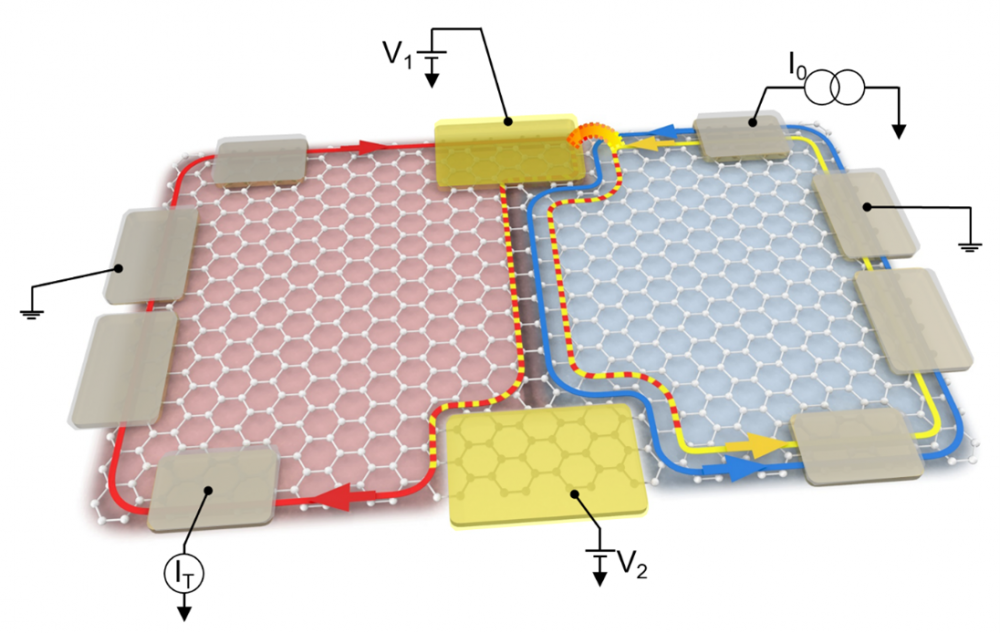François Parmentier (SPEC)
Les interféromètres optiques utilisent souvent des séparatrices qui divisent un faisceau lumineux en deux parties afin de les faire interférer. Dans le cas de l’optique quantique électronique, la réalisation de ce type de composants est un domaine de recherche actif. Des physiciens du Service de Physique de l’Etat Condensé (SPEC, CEA/CNRS), dans une collaboration internationale avec le Japon et la Corée, démontrent ici la réalisation d’un interféromètre de Mach-Sehnder électronique en fabriquant, grâce au graphène, des séparatrices totalement accordables et qui préservent la cohérence et les propriétés quantiques des électrons. Ces travaux sont publiés dans Physical Review Letters.

Quantum Hall valley splitters and a tunable Mach-Zehnder interferometer in graphene, M. Jo, P. Brasseur, A. Assouline, G. Fleury, H. -S. Sim, K. Watanabe, T. Taniguchi, W. Dumnernpanich, P. Roche, D. C. Glattli, N. Kumada, F. D. Parmentier, and P. Roulleau, Phys. Rev. Lett. 126, 146803 (2021)
Results achieved in the framework of the project ZerHall funded by topic 1 and carried out by François Parmentier (SPEC) and Mark Goerbig (LPS)